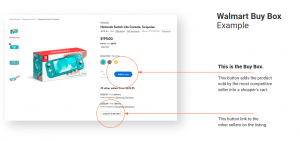 Your website was doing good, you hired a low-cost SEO expert and the next thing you know, all of your rankings are plummeting before your eyes. Sales start to dry up, and the guy you hired is no longer answering phone calls or emails.
Your website was doing good, you hired a low-cost SEO expert and the next thing you know, all of your rankings are plummeting before your eyes. Sales start to dry up, and the guy you hired is no longer answering phone calls or emails.
Don’t worry, you can get rid of bad links and get your site back on track. Even if your sites hasn’t been flagged by Google, it is still a good idea to review the links your SEO firm is acquiring for you to ensure you don’t get caught in the next algorithm update.
The issue with removing “bad links” is how do you determine which links are bad? You obviously wouldn’t want to disavow a link from Forbes or a national magazine. The method used to decipher a good and bad link needs to be one that is refined and thorough.
Before we get into which links you’ll need to remove, let’s quickly talk about disavowing links.
Disavowing Links on Google
Google is the “big” search engine, but Bing also offers options to disavow links. You’ll disavow links by doing the following:
- Head to Google’s disavow links tool page
- Select your website
- Click “Disavow Links” (you need to do this on two different pages)
- Upload your text file with links to disavow
Google has a thorough outline on how your file should appear when uploaded. You can view their recommendations here.
But wait, how do you know which links to disavow? This is what we’re going to cover now.
Removing bad links means you need to know which sites link to your website. You can use backlink discovery tools such as Ahrefs, Moz or Majestic or Google will provide you with a list of websites that are linking to you. This information is available to you in a file that you can download from your Search Console (formerly called Webmaster Tools).
You’ll find the download list for your links by going to:
- Search Traffic
- Links to Your Site
- Who links the most (click More)
Once armed with all of the links to your website, you’ll need to go through the tedious task of analyzing all of the links to your website. If there are hundreds of links, grab a cup of coffee and be prepared to spend several hours following the next steps.
Each link requires a thorough examination. It would not be optimal to remove all links unless they’re low quality or spam links. The “bad” links that should be removed normally fall into the following categories:
SEO Directories
A directory that anyone can submit a URL to for a link. Directories used to serve a purpose, but they’re less prevalent in today’s digital world. The directories you’ll want to remove links from include:
- “Add URL” or “Submit Links,”
- No verification process in place
Look at the quality of the sites in the directory and judge if it’s a high-quality directory, or a spam farm.
The URL structure of these links will also give a hint as to whether the link is a directory or not. A link may contain a structure like “business/farm-equipment/,” which indicates the directory and sub-directory respectively.
Article directories are the same as SEO directories in the sense that anyone can post an article with few restrictions in place.
Some article directories provide value, but most are just for link building purposes. The article directories to avoid include:
- No editorial process
- Hundreds or thousands of posts daily
- Posts with little or no substance
If you believe you can automate the sending and approval of an article to one of these directories, there is a strong chance that it is a bad link.
PBN (Blog Networks)
Private blog networks are hunted by Google, with their links doing more harm than good once the network is discovered. Special attention is needed when looking at these sites to determine if they may be a site you want to disavow:
- Is there an about page?
- Does a real person run the page?
- Is there a photo? (check the photo using a reverse image search to see if it’s a stock photo).
- Does the site lack proper design and layout structure?
- Are the articles on the site worth a read? Do they provide substance?
- How many articles are on the site?
- Does the page that promotes your site have any relevant information, or is the content written for the sole purpose of a link?
Dig deeper into the website to look at its history if you don’t know if it’s a reputable site or not. Two tools that will be invaluable in the process are:
- http://www.screenshots.com
- http://www.archive.org
You want to look for a few things:
- Was the site a former e-commerce site, non-profit, etc.?
- Has the site changed direction recently? (i.e. it used to be a local store for cat food and now talks about bikes)
If you’ve done your due diligence and think the site may be a place for just link dropping, add it to your list of bad links to remove.
Note: You can drag and drop an image into Google’s image search to do a reverse image search. Browser plugins and add-ons will help you achieve the same results. This can tell you whether the person’s image on the “about page” is a stock photo, or a real person.
Profile Links
Spammers and low cost SEO experts aim to gain links in masses. Profile links, the kind found on forums, are a prime example of this. These links are inserted into a profile on a forum, for example, and serve no other purpose.
These links provide no substance – no value.
Natural profile links on websites you frequent are fine, but when a site has hundreds of profile links, it’s an effort to boost a website’s rankings in the search engines.
Comment Links
Everyone likes to leave comments on their favorite blog or website. This is a great way for businesses to network, but when comments are made for just a link, it’s bad news for your website.
Determining if a link is bad when it’s a comment is simple:
- Is the link on a relevant site, or is it placed with hundreds of other comments on a random website?
- Does the comment add value, or is it simply a link to your website?
Google and other search engines want you to be a part of a community and leave comments, but if the comments are made using spam tactics, it’s a bad tactic for your rankings.
Moving Forward to Get Rid of Bad Links
Bad links take a lot of time to analyze and decipher. This is a tedious process, but it’s a process that can help restore your site’s rankings in the search engines. You want to contact the webmaster of a website to ask them to remove your link if possible.
Google recommends doing everything you can to remove bad links.
But a lot of webmasters never respond. This is where the power of the disavow tool really shines.
Using the criteria above, you’ll want to:
- Add bad links into a notepad file
- Follow Google’s format guidelines
- Submit the file using the disavow tool
You should ask for the link to be removed from the webmaster(s) first, but a lot of people skip this step.
Digital & Social Articles on Business 2 Community(132)
Report Post




